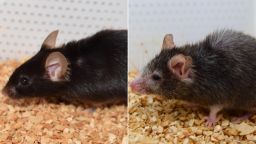
Breaking News
 The 3 Reasons Behind US Plot to Depose Venezuela's Maduro – Video #254
The 3 Reasons Behind US Plot to Depose Venezuela's Maduro – Video #254
 Evangelicals and the Veneration of Israel
Evangelicals and the Veneration of Israel
 Zohran Mamdani's Socialist Recipe for Economic Destruction
Zohran Mamdani's Socialist Recipe for Economic Destruction
 BREAKING: Fed-Up Citizens Sue New York AG Letitia James for Voter Intimidation...
BREAKING: Fed-Up Citizens Sue New York AG Letitia James for Voter Intimidation...
Top Tech News
 HUGE 32kWh LiFePO4 DIY Battery w/ 628Ah Cells! 90 Minute Build
HUGE 32kWh LiFePO4 DIY Battery w/ 628Ah Cells! 90 Minute Build
 What Has Bitcoin Become 17 Years After Satoshi Nakamoto Published The Whitepaper?
What Has Bitcoin Become 17 Years After Satoshi Nakamoto Published The Whitepaper?
 Japan just injected artificial blood into a human. No blood type needed. No refrigeration.
Japan just injected artificial blood into a human. No blood type needed. No refrigeration.
 The 6 Best LLM Tools To Run Models Locally
The 6 Best LLM Tools To Run Models Locally
 Testing My First Sodium-Ion Solar Battery
Testing My First Sodium-Ion Solar Battery
 A man once paralyzed from the waist down now stands on his own, not with machines or wires,...
A man once paralyzed from the waist down now stands on his own, not with machines or wires,...
 Review: Thumb-sized thermal camera turns your phone into a smart tool
Review: Thumb-sized thermal camera turns your phone into a smart tool
 Army To Bring Nuclear Microreactors To Its Bases By 2028
Army To Bring Nuclear Microreactors To Its Bases By 2028
 Nissan Says It's On Track For Solid-State Batteries That Double EV Range By 2028
Nissan Says It's On Track For Solid-State Batteries That Double EV Range By 2028
Old mice grow young again in study. Can people do the same?

The experiments show aging is a reversible process, capable of being driven "forwards and backwards at will," said anti-aging expert David Sinclair, a professor of genetics in the Blavatnik Institute at Harvard Medical School and codirector of the Paul F. Glenn Center for Biology of Aging Research. Our bodies hold a backup copy of our youth that can be triggered to regenerate, said Sinclair, the senior author of a new paper showcasing the work of his lab and international scientists. The combined experiments, published for the first time Thursday in the journal Cell, challenge the scientific belief aging is the result of genetic mutations that undermine our DNA, creating a junkyard of damaged cellular tissue that can lead to deterioration, disease and death.

 Carbon based computers that run on iron
Carbon based computers that run on iron

